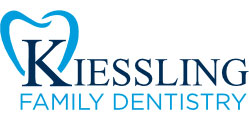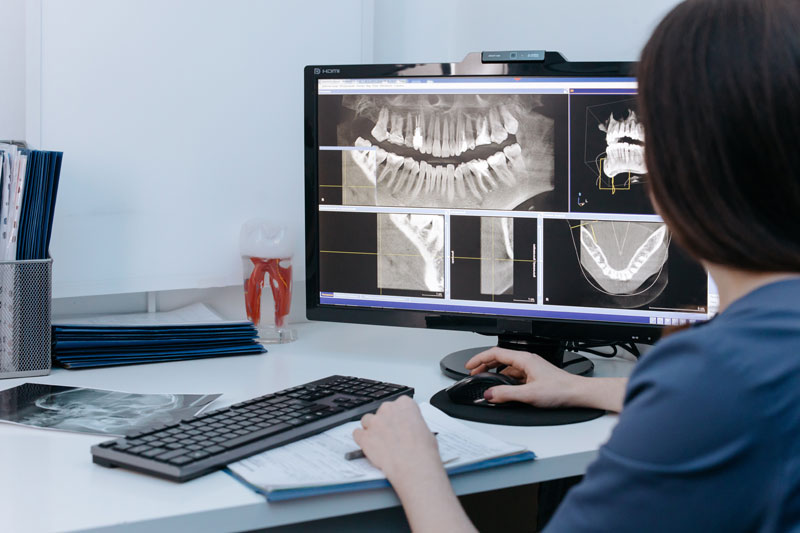Bite-Wing X-Ray: A bite-wing is an x-ray taken with the top and bottom teeth together. Bite wing x-rays provide a visual of how the teeth touch one another and help detect tooth decay. These x-rays are often done at periodic recall visits.
Periapical X-Ray: A periapical x-ray captures the whole tooth. It provides a visual from the crown, which is the chewing surface, to the bone that helps support the tooth below the gum line. This x-ray is used to detect problems below the gum line such as impacted teeth, fractures, abscesses, tumors and other changes to the bone linked to disease.
Panoramic X-Ray: A panoramic x-ray provides an extraoral and simple-to-perform view of the mouth from ear to ear. Panoramic film is placed in a mechanism that rotates around the outside of the head, as opposed to x-ray film inside the mouth. Panoramic x-rays are only taken on an as-needed basis such as for orthodontic treatment, positioning of wisdom teeth or dental implants. Since panoramic x-rays are non-invasive, a patient with an extreme gag reflex may benefit from such an x-ray.
Occlusal X-Ray: Occlusal X-rays highlight tooth development. They provide views from the floor and roof of the mouth to detect developmental issues. They can be used to see extra teeth, teeth not yet broken through the gums, cleft palates and more. Embedded foreign objects can also be detected with an occlusal x-ray.

